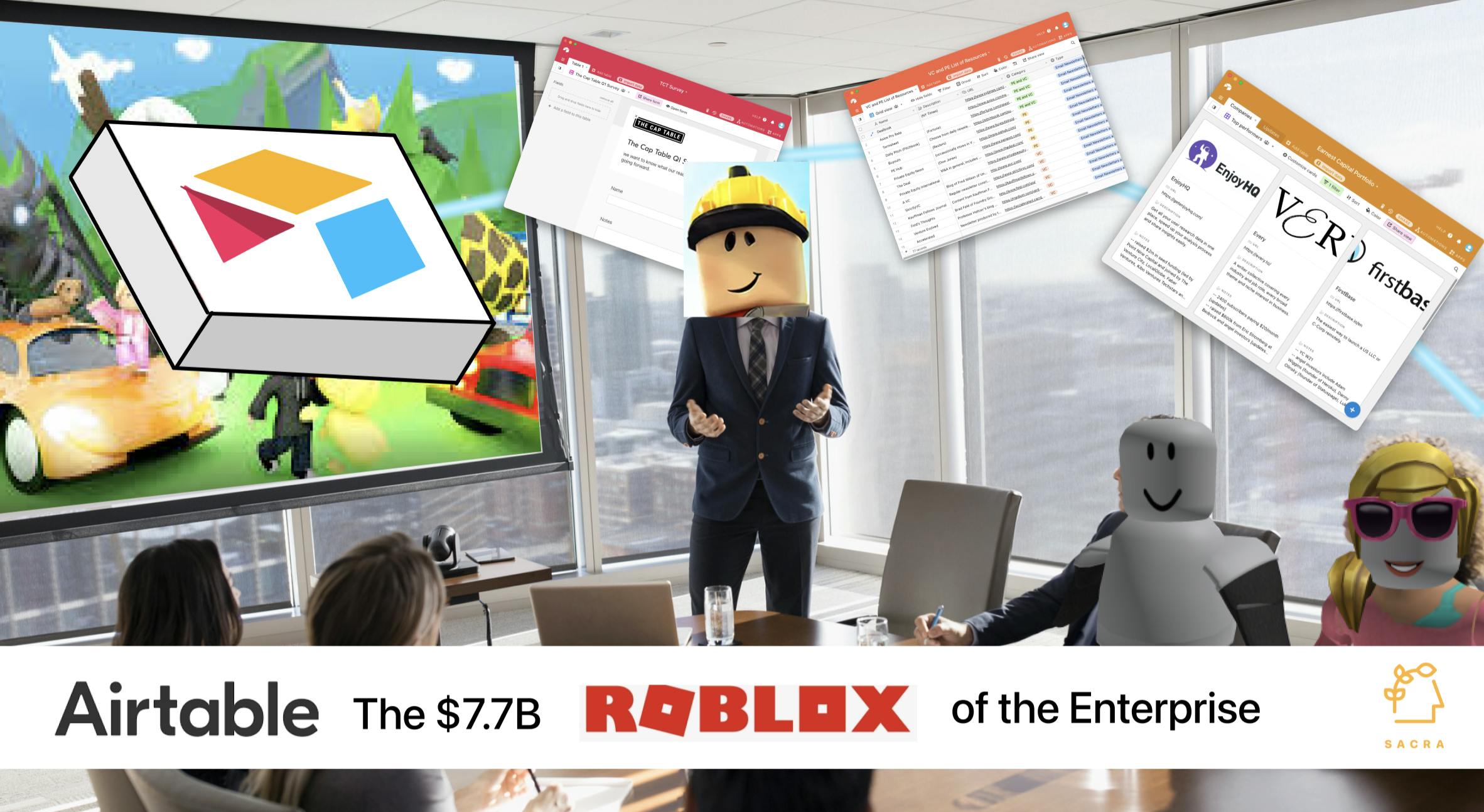Airtable: The $7.7B Roblox of the Enterprise

🌈 Abstract
The article provides an in-depth analysis of Airtable, a collaborative SaaS platform that allows non-technical users to build their own relational databases using a spreadsheet-like interface. It covers Airtable's business model, go-to-market strategy, product features, and the company's path to becoming the "Roblox of the enterprise".
🙋 Q&A
[01] Airtable's Business Model
1. What are the two key drivers of growth for Airtable? The two key drivers of growth for Airtable are:
- Getting more people using Airtable inside organizations by making it more useful and building hooks to spread the product across different departments
- Charging a higher price per seat by building additional functionality and educating customers on how to use those features
2. How does Airtable's services-heavy approach help drive adoption and retention? Airtable takes a services-heavy approach to help onboard and support enterprise customers. This includes:
- Making sure teams are using Airtable correctly and getting the most value out of it
- Helping design the schema of an organization's Airtable base to avoid complexity
- Creating documentation, trainings, and certifications to enable broader usage within the organization This services-focused approach increases adoption and retention by ensuring Airtable becomes deeply embedded within the customer's workflows.
[02] Airtable's Go-to-Market Strategy
1. How does Airtable's "land and expand" strategy work? Airtable's go-to-market strategy is a services-heavy twist on the classic "land and expand" approach:
- Airtable lands organically within organizations, often starting with a few teams using it for specific use cases like content management or operations
- Airtable's customer success and services teams then work to drive expansion of Airtable usage across the organization by ensuring teams are getting maximum value from the tool
- This bottom-up adoption combined with top-down support helps Airtable spread across functional boundaries and become deeply embedded within the customer
2. What are the challenges Airtable faces in moving upmarket to the enterprise? The key challenge Airtable faces in moving upmarket is that its product was built for "builders" - the people inside organizations who want to tinker and create custom workflows. However, the critical stakeholders in enterprise deployments are often "consumers" who just want to use the system, not build it. Airtable lacks robust external interfaces and validation features that would make it more accessible to these enterprise consumers, posing a risk as Airtable tries to sell to larger organizations.
[03] Airtable's Path to Becoming the "Roblox of the Enterprise"
1. How does Airtable's vision compare to Roblox's model? Airtable's vision is to become the "Roblox of the enterprise" - a platform that allows both creators and consumers to build and use custom software and workflows, much like how Roblox enables both game creation and gameplay.
Just as Roblox attacked the whitespace between existing video game genres, Airtable aims to own the whitespace between existing B2B SaaS verticals, allowing knowledge workers to build their own tailored tools and applications.
2. What product changes does Airtable need to make to better serve enterprise customers? To better serve enterprise customers, Airtable needs to create more external interfaces and validation features that make it easier for "consumers" (not just "builders") to interact with and understand the custom applications built on the platform. This could involve things like:
- Allowing Airtable apps to be hosted externally and linked to, rather than just living within the core Airtable interface
- Adding more pre-built, verticalized Airtable packages (e.g. "Airtable for Marketing") that bundle specialized functionality and services These changes would make Airtable more accessible to a wider range of stakeholders within large organizations, driving broader adoption and retention.